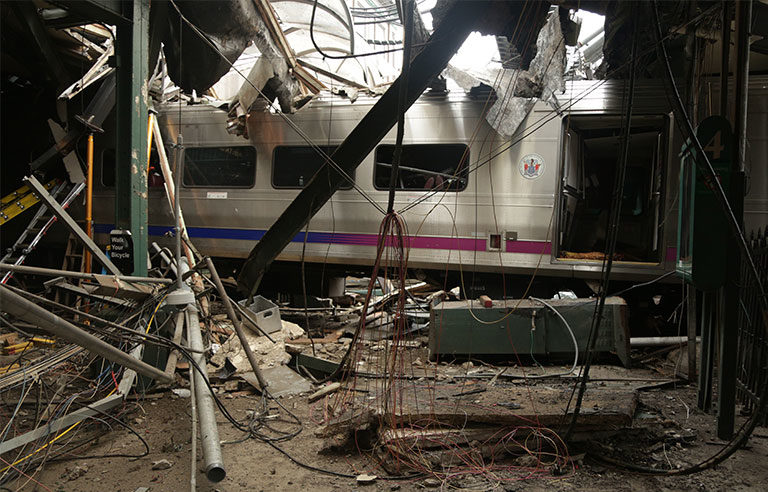NYC commuter railroad crashes spur NTSB to renew call for sleep apnea screenings

Washington — The National Transportation Safety Board on Feb. 6 renewed its call for sleep apnea screenings and treatment after investigating two separate commuter railroad collisions in the New York City metro area.
According to an agency press release, NTSB determined that fatigue from “undiagnosed severe obstructive sleep apnea” was a common cause in the crashes in Brooklyn, NY, on Jan. 4, 2017, and Hoboken, NJ, on Sept. 29, 2016. The collisions resulted in a combined 218 injuries and one death.
“The broader issues of reducing fatigue-related accidents and demanding medical fitness are both on NTSB’s ‘Most Wanted’ list of transportation safety improvements. Once more, these accidents remind us why,” Chairman Robert Sumwalt said. “The traveling public deserves alert operators. That is not too much to ask.”
The Federal Railroad Administration and the Federal Motor Carrier Safety Administration withdrew a joint advance notice of proposed rulemaking on sleep apnea on Aug. 4.
The agencies were seeking to gather data and information on moderate to severe sleep apnea among safety-sensitive workers in rail and highway transportation. The ANPRM also sought to analyze the benefits and costs of new regulations, such as requiring operators with multiple sleep apnea risk factors to undergo evaluation and treatment.
FRA and FMCSA stated they would address sleep apnea through other means, such as fatigue management programs.
NTSB expressed its “disappointment” after the ANPRM was withdrawn, stating, “Obstructive sleep apnea has been in the probable cause of 10 highway and rail accidents investigated by the NTSB in the past 17 years.”
Three professional medical groups – the American Academy of Sleep Medicine, the American College of Occupational and Environmental Medicine, and the American Thoracic Society – also denounced the move in separate statements.
The American Sleep Apnea Association estimates that 22 million Americans have sleep apnea, and that 80 percent of moderate and severe OSA cases are undiagnosed. A study published in June by researchers at the University of California, San Francisco concluded that as many as 41 percent of commercial motor vehicle drivers could have OSA.
Post a comment to this article
Safety+Health welcomes comments that promote respectful dialogue. Please stay on topic. Comments that contain personal attacks, profanity or abusive language – or those aggressively promoting products or services – will be removed. We reserve the right to determine which comments violate our comment policy. (Anonymous comments are welcome; merely skip the “name” field in the comment box. An email address is required but will not be included with your comment.)

